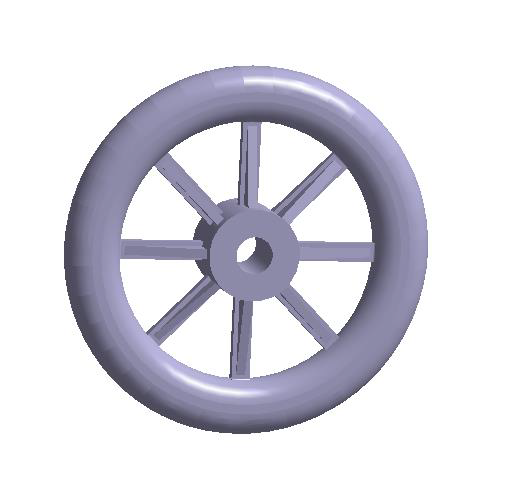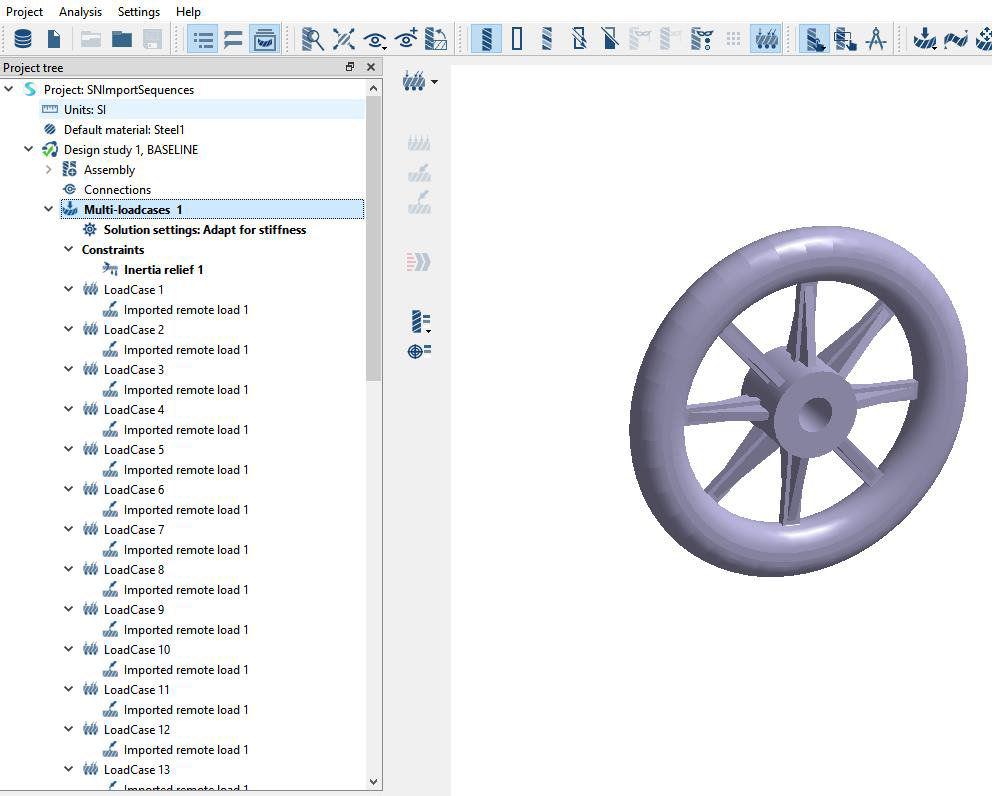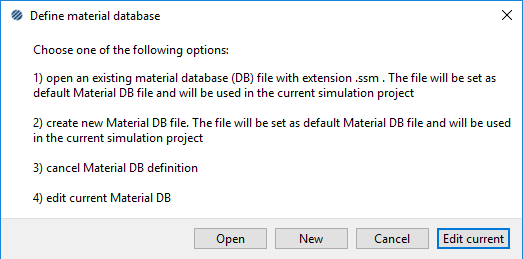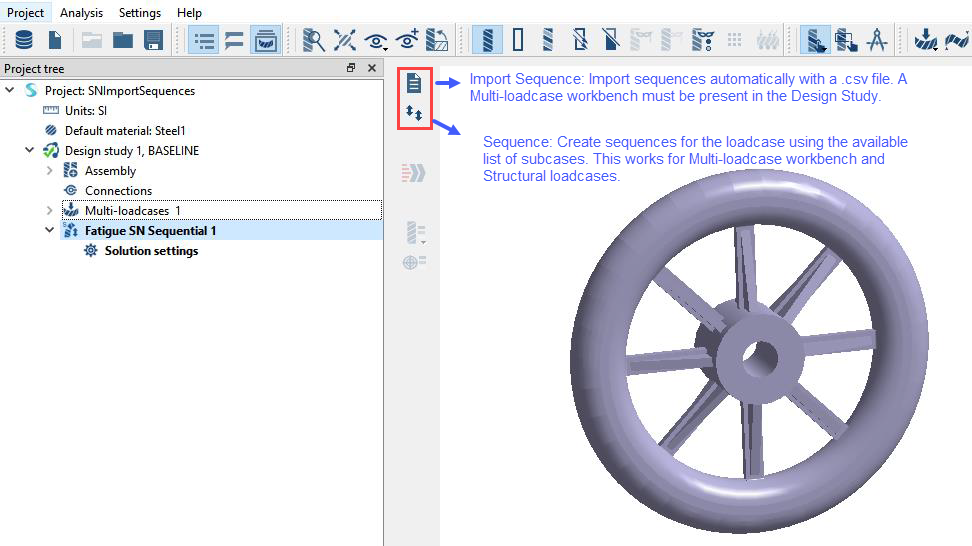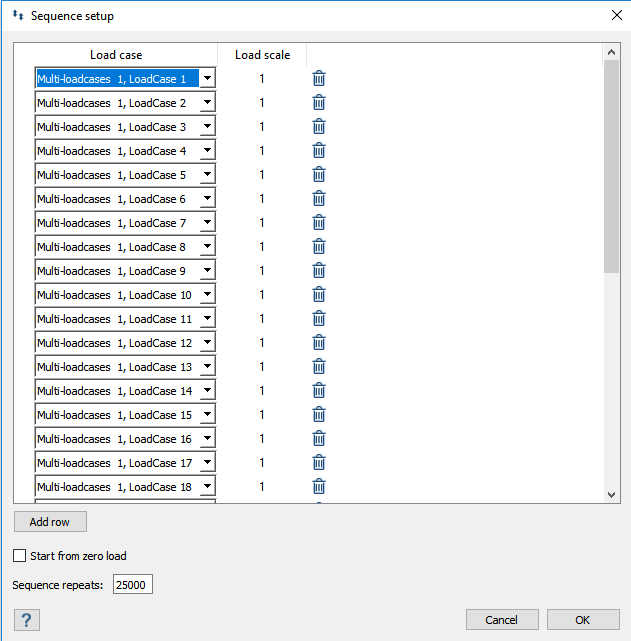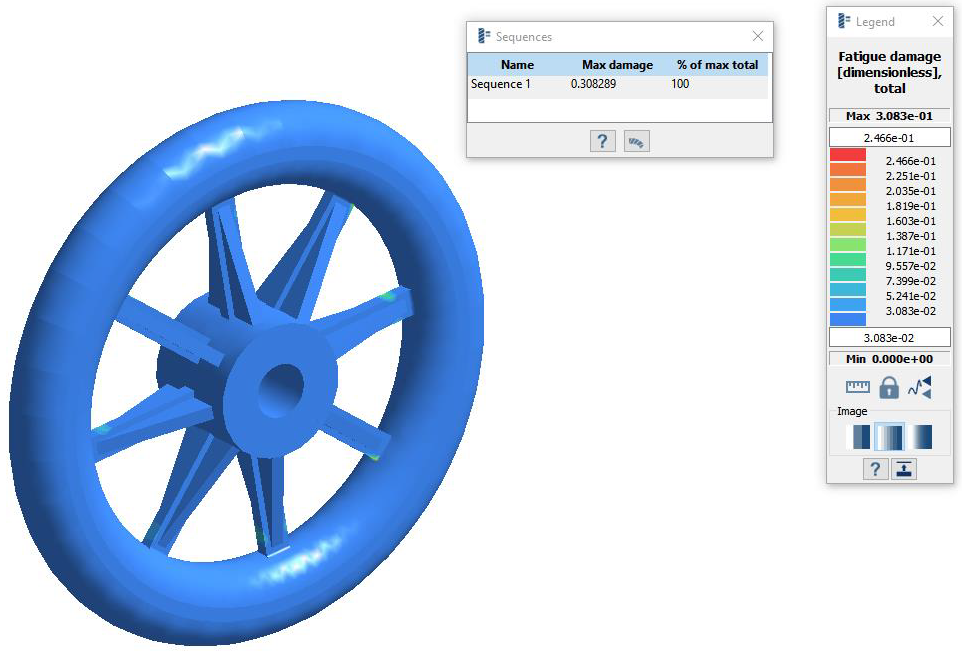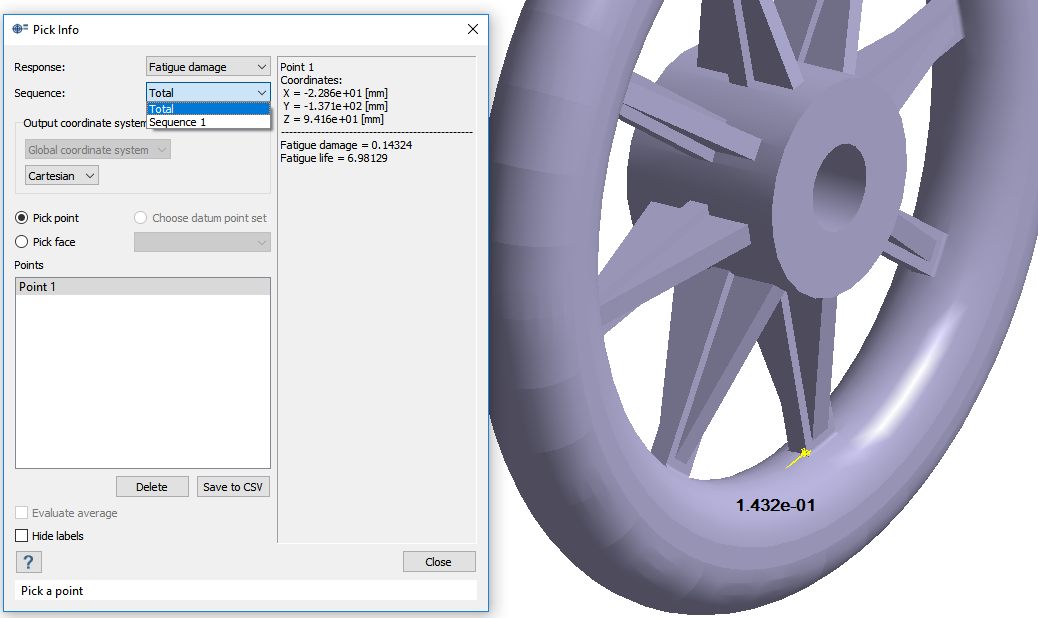SS-T: 4120: SN Sequential - Import Sequences
Import sequences for SN Sequential fatigue analysis from a .csv file.
- Prerequisites
- Some features used in this tutorial are only available in SimSolid Advanced version. Please switch to Advanced to complete this tutorial.
- Purpose
- SimSolid performs meshless structural
analysis that works on full featured parts and assemblies, is tolerant of
geometric imperfections, and runs in seconds to minutes. In this tutorial,
you will do the following:
- Create SN Sequential fatigue loadcase.
- Import sequences using a .csv file.
- Model Description
- The following model files are needed for this tutorial:
- SNImportSequences.ssp
- ImportSequences.csv
Open Project
Review Model
Add Fatigue Material Properties
If an SN curve has already been assigned, skip this step. Check the assigned material properties by right-clicking Assembly in the Project Tree and selecting .
Create SN Sequential Fatigue Loadcase
Import Sequences
- In the Project Tree, open the Fatigue SN/EN Time Workbench.
-
On the workbench toolbar, click
 (Import Sequences).
(Import Sequences).
- Click Import from CSV and select ImportSequences.csv.
- Click OK.
Imported Sequences File Format
CSV file format for importing sequences.
CSV file format fields
 Figure 8.
Figure 8. - Sequence name – Alpha-numeric values. Name of the Sequence.
- Repeats – Numeric values. Defines the number of repeats for each event.
- Loadcases – Defines the order of loadcases for each sequence.
Review Sequences
Run Analysis
- In the Project Tree, open the Analysis Workbench.
-
Click
 (Solve).
(Solve).
